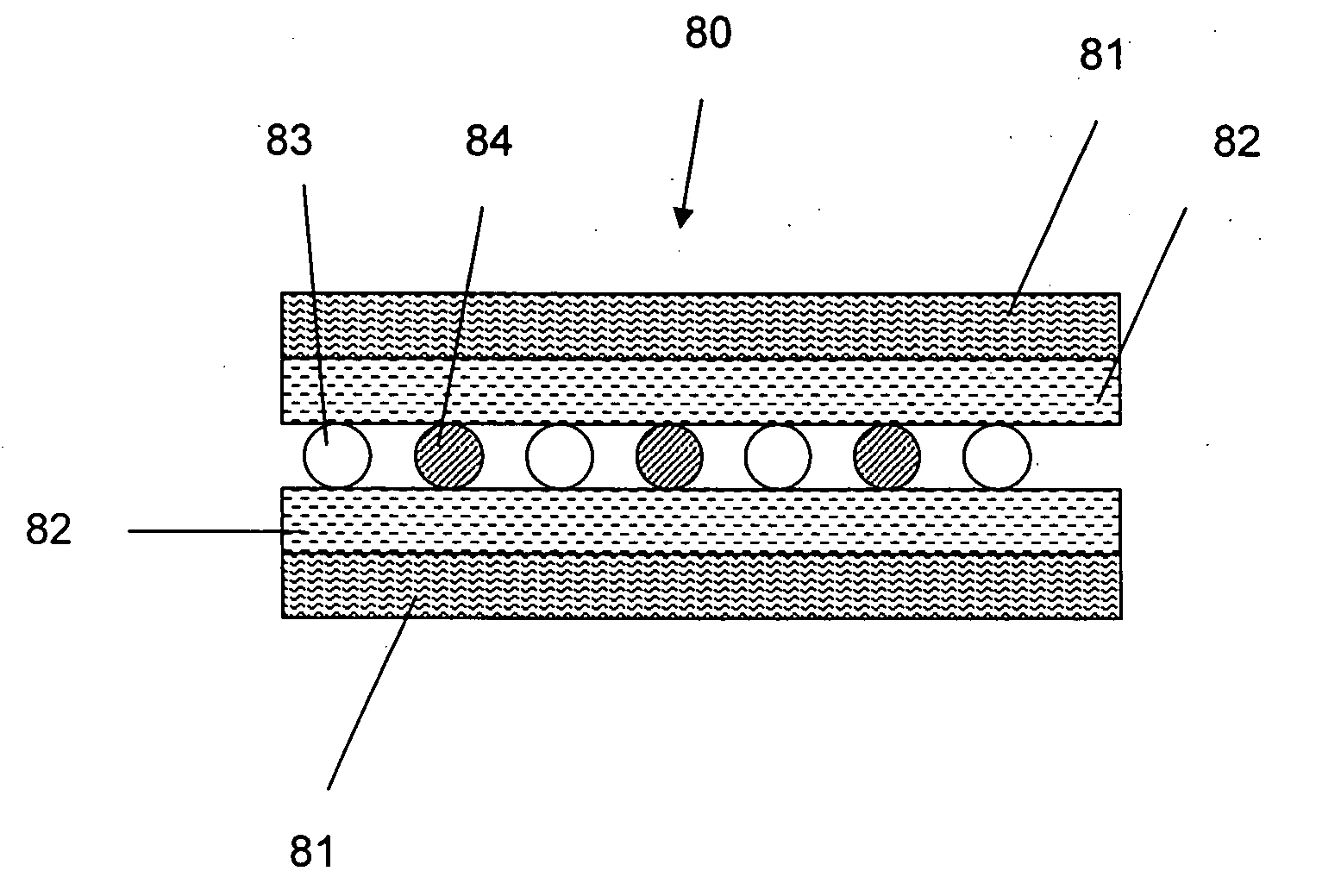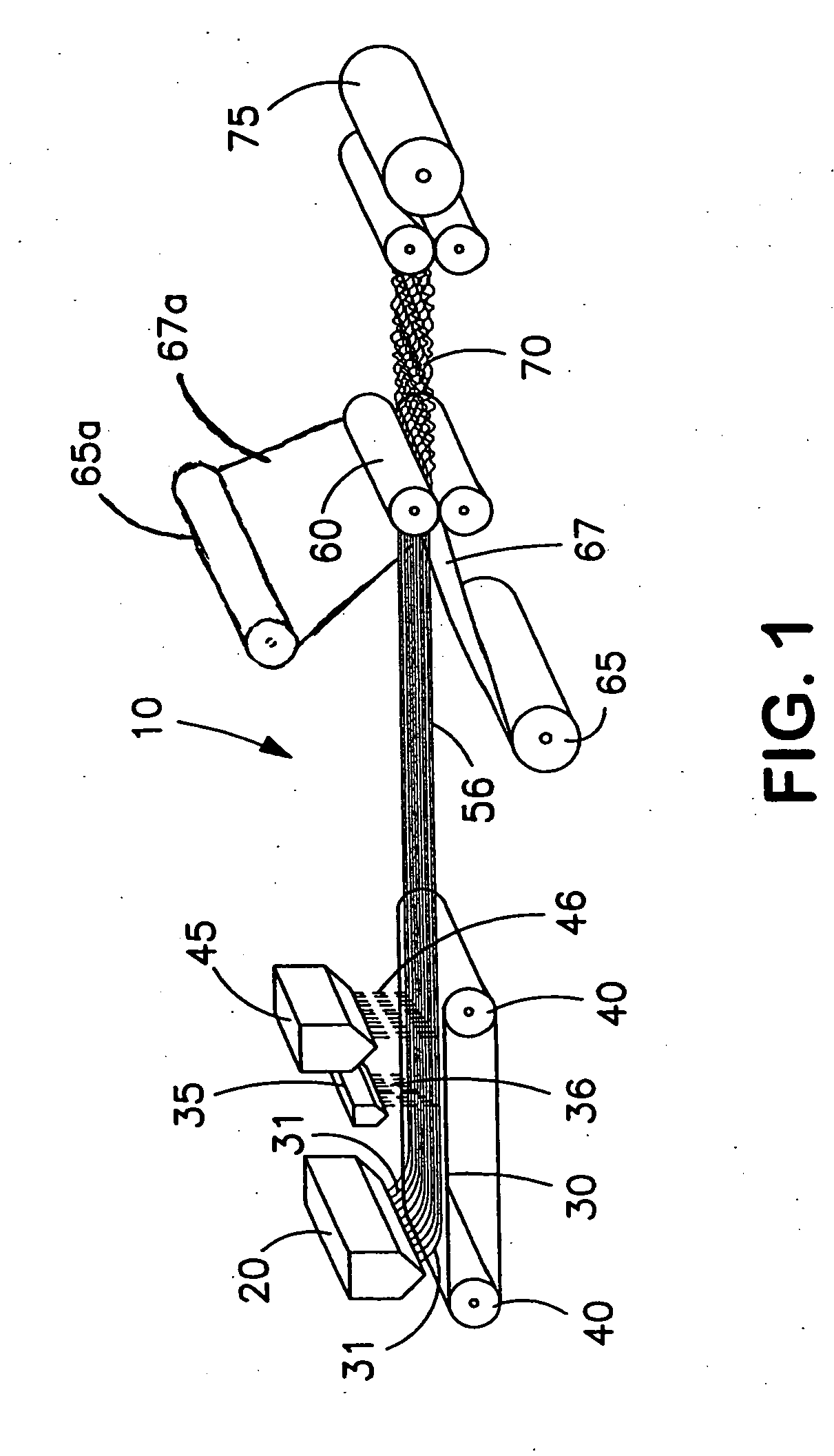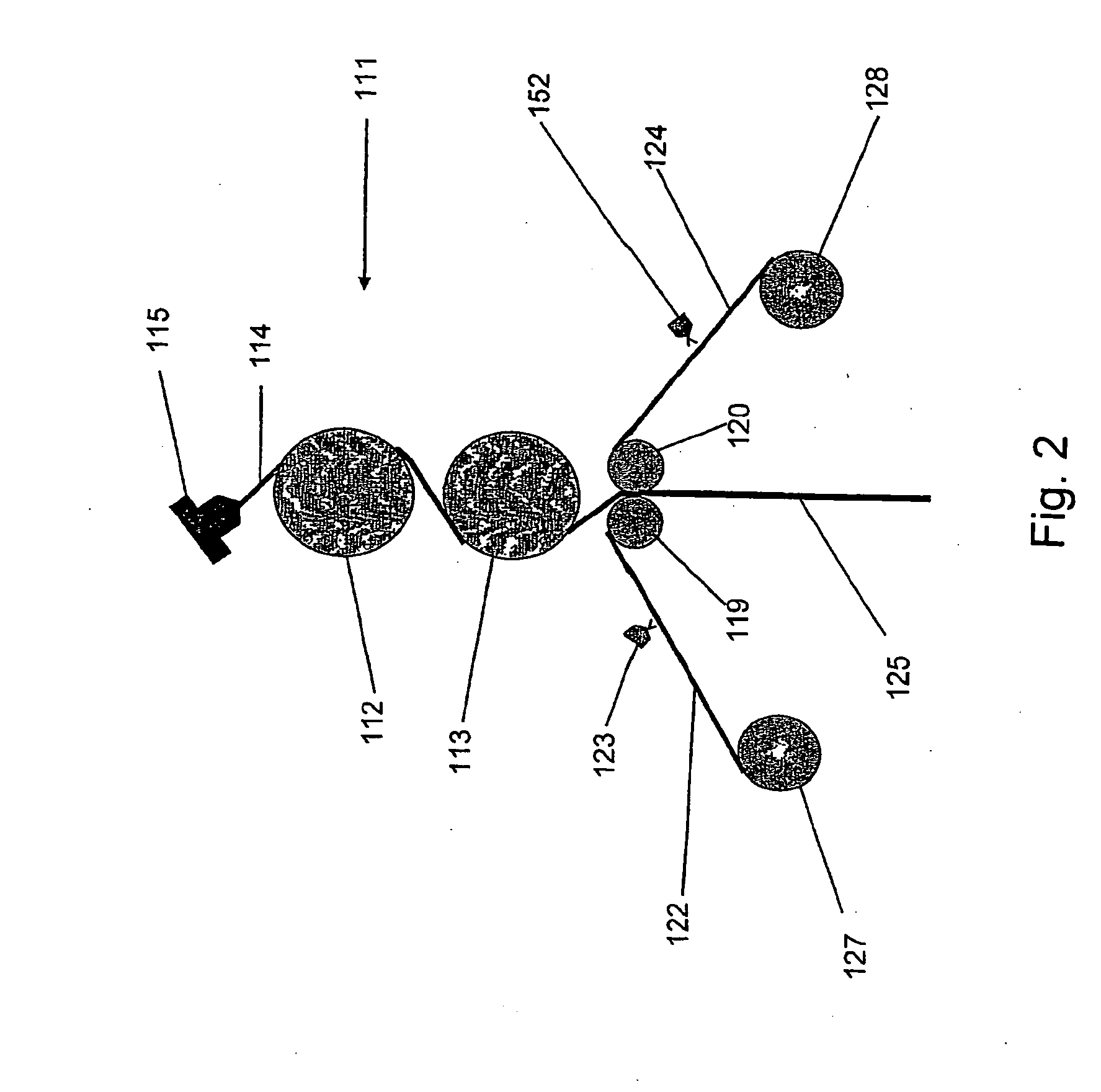Latent elastic articles and methods of making thereof
- Summary
- Abstract
- Description
- Claims
- Application Information
AI Technical Summary
Benefits of technology
Problems solved by technology
Method used
Image
Examples
example 1
[0095] In one example, two extruders were used to extrude parallel continuous filaments onto a chilled roll. In the first extruder, a thermoplastic elastomer blend containing a styrenic block copolymer was extruded into parallel continuous filaments. Samples were made using two different thermoplastic elastomer blends. Blend #1 contained about 68 percent KRATON® G-1730 styrene-ethylenepropylene block copolymer available from KRATON Polymers LLC, about 12 percent C-10 polyethylene wax, and about 20 percent REGALREZ® 1126 tackifier, both being available from Eastman Chemical. Blend #2 contained about 80 percent KRATON® G-1730 styrene-ethylenepropylene block copolymer, about 7 percent C-10 polyethylene wax, and about 13 percent REGALREZ® 1126 tackifier. In the second extruder, a single-site catalysis elastomeric polyolefin was extruded into parallel continuous filaments. The single-site catalysis elastomeric polyolefin was a polyolefin plastomer identified as Dow AFFINITY EG 8185, avai...
example 2
[0096] In a second example, elastic laminates were produced from bicomponent continuous filaments extruded in a parallel arrangement onto a chilled roller. Two different polymers were processed through two separate extruders and through use of distribution plates, the two polymer streams were joined to form sheath / core filaments. The filament die had 12 holes per inch with each hole having a 0.9 mm diameter. Polymer throughput was varied through each extruder to achieve different polymer ratios in the filaments. It was verified under the microscope that sheath / core structures were being created. The filaments were extruded onto a large chill roll to quench the filaments. The filaments were then stretched in the machine direction by about 500%. The filaments were then adhesively laminated between two 0.4 osy spunbond facings. The adhesive (2 gsm melt spray adhesive 2808-08 available from Bostik, Inc.) was applied to one facing material prior to the nip point where all 3 components co...
example 3
[0097] In a third example, elastic laminates having elastic cores of both parallel continuous filaments and meltblown fibers were produced. In one sample, Blend #1 from Example 1 was used in the continuous filaments and Dow AFFINITY EG8185 polyolefin plastomer was used for the meltblown fibers. In the other sample, Blend #1 from Example 1 was used in both the meltblown and the continuous filaments. The filament die had 12 holes per inch, each hole having 0.9 mm diameter. The filaments were first laid down on a foraminous wire and then the meltblown was formed on top of the filaments. The basis weight on the wire of the elastic core was 20 gsm, with the filaments having a basis weight of 12 gsm and the meltblown having a basis weight of 8 gsm.
[0098] The elastic filament / MB structure was removed from the forming wire and stretched in the machine direction before being laminated between 0.40 osy spunbond facings via smooth roll calendering. The laminate was then wound on a roll at a s...
PUM
| Property | Measurement | Unit |
|---|---|---|
| Fraction | aaaaa | aaaaa |
| Fraction | aaaaa | aaaaa |
| Fraction | aaaaa | aaaaa |
Abstract
Description
Claims
Application Information
 Login to View More
Login to View More - R&D
- Intellectual Property
- Life Sciences
- Materials
- Tech Scout
- Unparalleled Data Quality
- Higher Quality Content
- 60% Fewer Hallucinations
Browse by: Latest US Patents, China's latest patents, Technical Efficacy Thesaurus, Application Domain, Technology Topic, Popular Technical Reports.
© 2025 PatSnap. All rights reserved.Legal|Privacy policy|Modern Slavery Act Transparency Statement|Sitemap|About US| Contact US: help@patsnap.com



